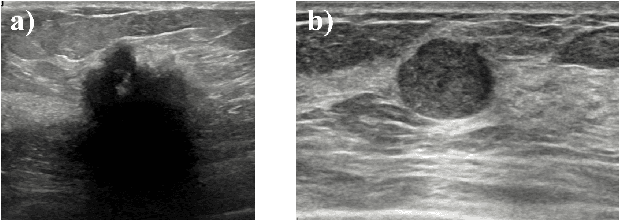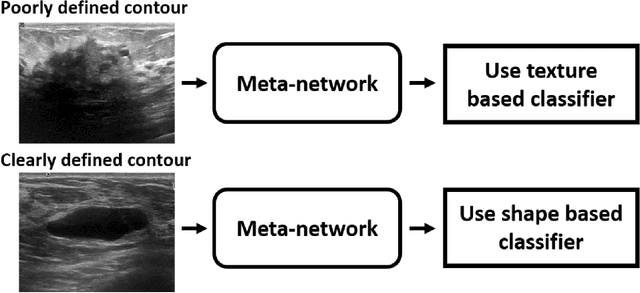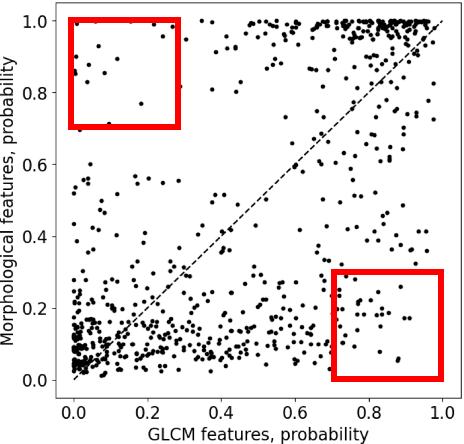Norbert Zolek
Performance of Machine Learning Classification in Mammography Images using BI-RADS
Nov 14, 2023



Abstract:This research aims to investigate the classification accuracy of various state-of-the-art image classification models across different categories of breast ultrasound images, as defined by the Breast Imaging Reporting and Data System (BI-RADS). To achieve this, we have utilized a comprehensively assembled dataset of 2,945 mammographic images sourced from 1,540 patients. In order to conduct a thorough analysis, we employed six advanced classification architectures, including VGG19 \cite{simonyan2014very}, ResNet50 \cite{he2016deep}, GoogleNet \cite{szegedy2015going}, ConvNext \cite{liu2022convnet}, EfficientNet \cite{tan2019efficientnet}, and Vision Transformers (ViT) \cite{dosovitskiy2020image}, instead of traditional machine learning models. We evaluate models in three different settings: full fine-tuning, linear evaluation and training from scratch. Our findings demonstrate the effectiveness and capability of our Computer-Aided Diagnosis (CAD) system, with a remarkable accuracy of 76.39\% and an F1 score of 67.94\% in the full fine-tuning setting. Our findings indicate the potential for enhanced diagnostic accuracy in the field of breast imaging, providing a solid foundation for future endeavors aiming to improve the precision and reliability of CAD systems in medical imaging.
Deep meta-learning for the selection of accurate ultrasound based breast mass classifier
Nov 03, 2022



Abstract:Standard classification methods based on handcrafted morphological and texture features have achieved good performance in breast mass differentiation in ultrasound (US). In comparison to deep neural networks, commonly perceived as "black-box" models, classical techniques are based on features that have well-understood medical and physical interpretation. However, classifiers based on morphological features commonly underperform in the presence of the shadowing artifact and ill-defined mass borders, while texture based classifiers may fail when the US image is too noisy. Therefore, in practice it would be beneficial to select the classification method based on the appearance of the particular US image. In this work, we develop a deep meta-network that can automatically process input breast mass US images and recommend whether to apply the shape or texture based classifier for the breast mass differentiation. Our preliminary results demonstrate that meta-learning techniques can be used to improve the performance of the standard classifiers based on handcrafted features. With the proposed meta-learning based approach, we achieved the area under the receiver operating characteristic curve of 0.95 and accuracy of 0.91.
 Add to Chrome
Add to Chrome Add to Firefox
Add to Firefox Add to Edge
Add to Edge